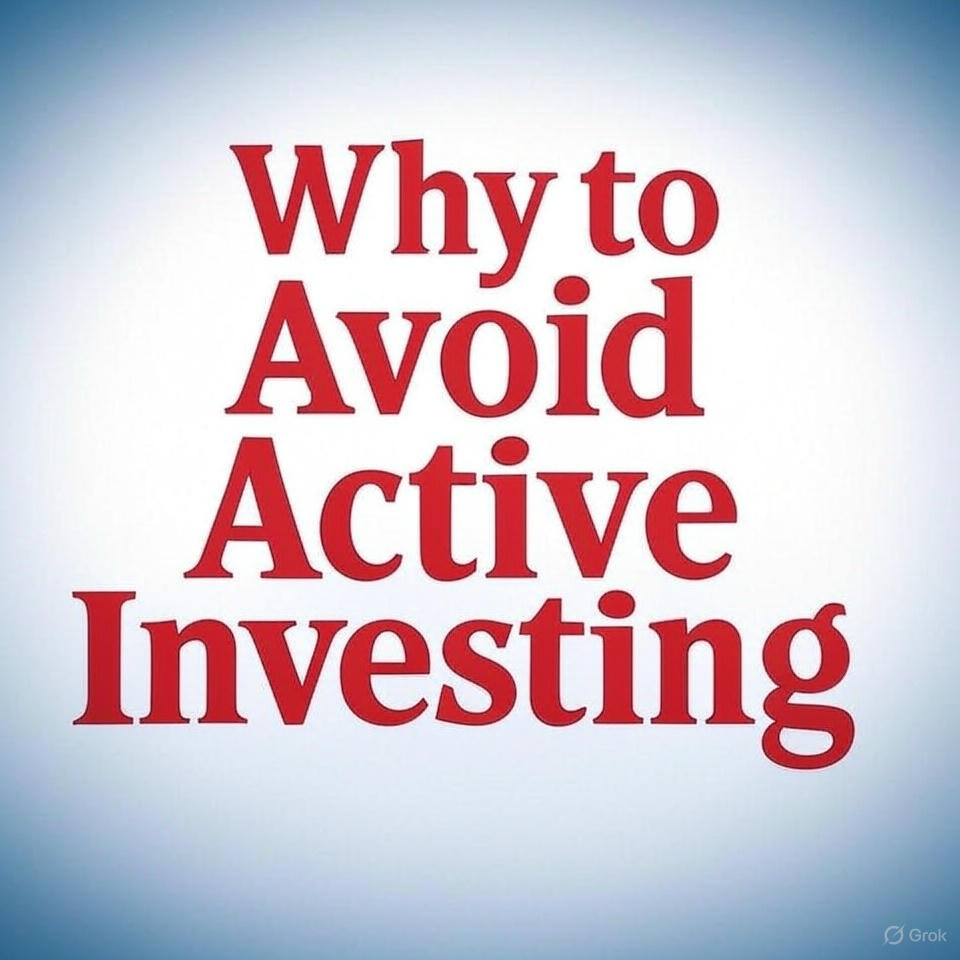Should You Avoid Active Investing?

Why Active Investing Is a Loser's Game
If you've ever thought about trying to beat the stock market, you're not alone. The allure of picking winning stocks or funds to outperform the market is strong. After all, who doesn’t want to outsmart Wall Street? But here’s the hard truth: even the best and brightest investors, with billions of dollars and top-tier resources, struggle to beat the market consistently. Let’s dive into why active investing is often called a "loser’s game" and what you can do to come out ahead.
The Institutional Advantage: Why They Should Win
You’d think institutional investors like pension funds, endowments, or large mutual funds would have the upper hand in beating the market. Here’s why:
Massive Resources: These funds manage billions (sometimes tens of billions) of dollars. They can afford to hire the best portfolio managers, who compete fiercely to run these accounts and earn hefty fees.
Access to Elite Managers: Unlike individual investors, institutions can invest with exclusive, high-performing managers who often have minimum investment requirements far beyond what most of us can afford.
Proven Track Records: No institution would hire a manager without a stellar history of beating their benchmarks or at least matching them. Underperformers don’t make the cut.
Convincing Pitches: These managers are experts at presenting compelling cases for their past successes and future potential. Their pitches are polished and persuasive.
Professional Consultants: Many institutions hire top-tier consultants to conduct rigorous due diligence. These experts screen for everything: performance history, management tenure, staff depth, consistency, and even performance in bear markets.
Lower Fees: Institutions often negotiate lower fees for active management compared to what retail investors pay.
With all these advantages, you’d expect institutional funds to dominate the market. So, how do they actually perform?
The Reality: Even the Pros Underperform
The SPIVA Institutional Scorecard (Year-End 2023) paints a sobering picture. Over a 10-year period ending December 2023, the data shows:
Retail Mutual Funds: 89% of active U.S. equity mutual funds underperformed their benchmarks, even before accounting for fees. This includes areas like emerging markets and international small-cap funds, which are often touted as ripe for active management.
Institutional Equity Funds: While slightly better than retail funds, 81% of institutional equity funds still underperformed their benchmarks.
Separately Managed Accounts (SMAs): Even worse, 95% of institutional SMAs/wrap accounts failed to beat their benchmarks.
This isn’t an isolated finding. A 2020 study by Richard Ennis found that public pension plans underperformed their benchmarks by 0.99% annually, and endowments lagged by .59%. Of 46 pension plans studied, only one showed statistically significant outperformance, while 17 had significant underperformance. The odds of beating the market over a decade? A measly 2%.
Other studies echo this. For example, a 2005 study of 3,700 plan sponsors from 1994–2003 found that managers were hired after strong past performance, but their post-hiring returns were essentially zero. Staying with “fired” managers would have actually yielded better results! A 2000 study of 292 pension plans found no correlation between past and future performance, with most managers failing to beat their benchmarks consistently.
Why Active Investing Fails
The evidence is clear: even with vast resources, expert consultants, and access to top-tier managers, institutional investors struggle to beat the market. Why? Because markets are highly efficient, and past performance doesn’t predict future success. The costs of active management: fees, trading, and taxes further erode returns. As Charles Ellis, a renowned investment expert, puts it, active investing is a "loser’s game." It’s not impossible to win, but the odds are so low it’s unwise to try.
For individual investors, the odds are even worse. We don’t have the resources, time, or access to elite managers that institutions do. If they can’t consistently win, what chance do we have? Unless you’re Warren Buffett (and let’s be honest, you’re probably not), trying to outsmart the market is a tough bet.
The Smarter Way to Invest
So, what’s the alternative? Stop playing the active investing game. Instead, focus on capturing market returns with low-cost, tax-efficient strategies. Here’s how:
Invest in Index Funds: Low-cost index funds or ETFs track broad market indices, delivering market returns with minimal fees. They consistently outperform the vast majority of active funds over time.
Prioritize Low Costs: High fees eat into your returns. Choose funds with low expense ratios to keep more of your money working for you.
Stay Disciplined: Avoid chasing hot managers or trendy stocks. Stick to a long-term, diversified strategy that aligns with your financial goals.
Ignore the Hype: Wall Street and the financial media thrive on keeping you engaged in the active investing game. Their profits depend on your participation, not your success.
The Entertainment Trap
Active investing can be exciting, like gambling at a casino or betting on a horse race. For some, the thrill of picking a winning stock or fund is worth it. But investing isn’t about entertainment; it’s about securing your financial future with the least risk possible. If you enjoy the thrill, allocate a small portion of your portfolio (say, 5%) to active strategies, but keep the bulk of your investments in low-cost, passive funds.
Final Thoughts
The data is undeniable: active investing is a loser’s game for most, whether you’re an individual or a billion-dollar institution. By choosing low-cost index funds, you can virtually guarantee better performance than the vast majority of active managers without the stress or high fees. Investing should be boring, predictable, and effective. That’s how you win.